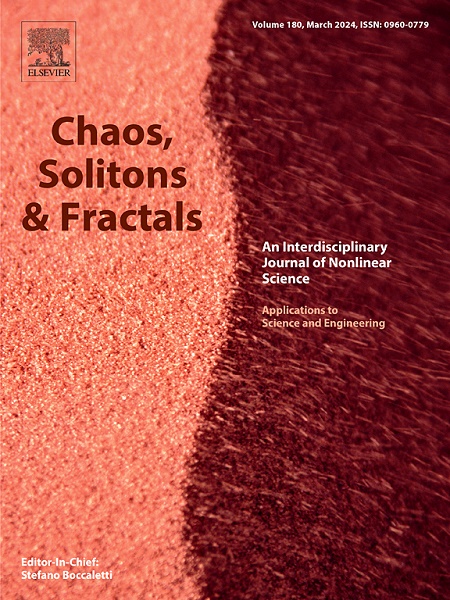Global bifurcation in a virus, defective genomes, satellite RNAs tripartite system: Breakdown of a coexistence quasi-neutral curve
IF 5.3
1区 数学
Q1 MATHEMATICS, INTERDISCIPLINARY APPLICATIONS
引用次数: 0
Abstract
The dynamics of wild-type (wt) RNA viruses and their defective viral genomes (DVGs) have been extensively studied both experimentally and theoretically. This research has paid special attention to the interference effects of DVGs on wt accumulation, transmission, disease severity, and induction of immunological responses. This subject is currently a highly active and promising area of research since engineered versions of DVGs have been shown to act as antiviral agents. However, viral infections involving wt, DVGs, and other subviral genetic elements, like viral RNA satellites (satRNAs), have received scarce attention. Satellites are molecular parasites genetically different from the wt virus, which exploit the products of the latter for their own replication in as much as DVGs do, and thus they need to coinfect host cells along with the wt virus to complete their replication cycle. Despite satRNAs being very common, their dynamics co-infecting with wt viruses have been poorly investigated. Here, we analyze a mathematical model describing the initial replication phase of a wt virus producing DVGs and coinfecting with a satRNA. The model, which explicitly considers the viral RNA-dependent RNA polymerase produced by the wt virus, has three different dynamical regimes depending upon the wt replication rate (), the fraction of DVGs produced during replication (), and the replication rate of the satRNA (): () full extinction when ; () a bistable regime with full coexistence governed by a quasi-neutral curve of equilibria and full extinction when ; and () a scenario of bistability separating full extinction from wt-DVGs coexistence with no satRNA when . The transition from scenarios () to () occurs through the creation and destruction of a quasi-neutral curve of equilibria in a global bifurcation that we name as quasi-neutral nullcline confluence (QNC) bifurcation: at the bifurcation value, two nullcline hypersurfaces coincide, giving rise to the curve of equilibria. In agreement with previous research on global bifurcations tied to quasi-neutral manifolds, we have identified numerically and derived analytically scaling laws of the form , with being the length of the transients close to the remnant curve and the distance to the bifurcation value.
求助全文
约1分钟内获得全文
求助全文
来源期刊

Chaos Solitons & Fractals
物理-数学跨学科应用
CiteScore
13.20
自引率
10.30%
发文量
1087
审稿时长
9 months
期刊介绍:
Chaos, Solitons & Fractals strives to establish itself as a premier journal in the interdisciplinary realm of Nonlinear Science, Non-equilibrium, and Complex Phenomena. It welcomes submissions covering a broad spectrum of topics within this field, including dynamics, non-equilibrium processes in physics, chemistry, and geophysics, complex matter and networks, mathematical models, computational biology, applications to quantum and mesoscopic phenomena, fluctuations and random processes, self-organization, and social phenomena.
 求助内容:
求助内容: 应助结果提醒方式:
应助结果提醒方式:


